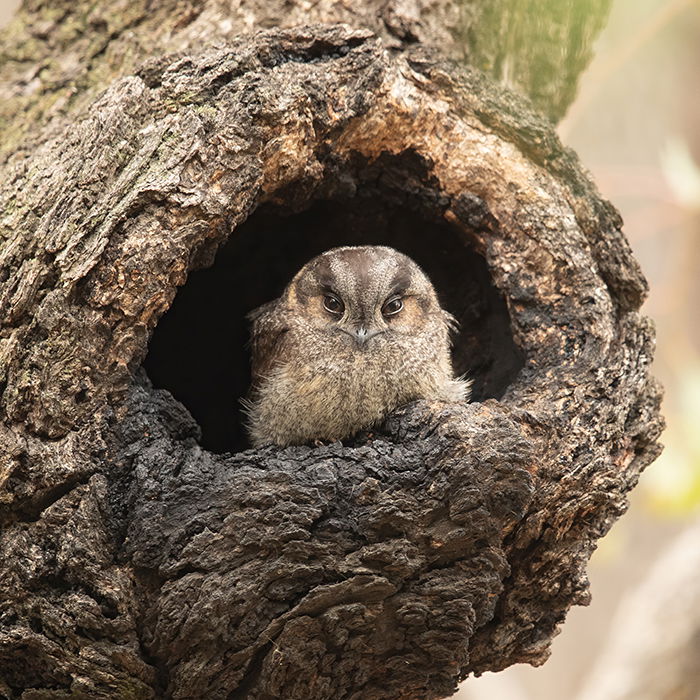Nocturnal Bird That’s Not an Owl
Ron Knight from Seaford, East Sussex, United Kingdom, CC BY 2.0 https://creativecommons.org/licenses/by/2.0, via Wikimedia Commons
Aegothelidae
by Inspector Barry Mins on January 25, 2022Hey kids, welcome back to our series on the mysteries of created kinds.
Last week we dropped in on a swimming lizard from Africa. Last week, the plated lizards were our hosts, and I still haven’t gotten the sand out of my boots. Fortunately, I won’t need to for where we are going this week.

This week we are moving to Australia, looking for birds. These birds are insectivores, feeding primarily on ants1 or beetles,2 depending on the species and habitat. To find the insects, these little birds have massive eyes for their size. However, their diet is varied, including spiders and millipedes as well.3 The availability of prey influences a special state these birds go into called torpor. When food is scarce, torpor is longer, deeper, and more common.4
What is torpor? Great question! These birds are nocturnal and roost in cavities of trees or rock piles. While roosting, they can go into torpor. In this state, an animal goes into inactivity, lowering its metabolism and other bodily functions to conserve energy and regulate body temperature.5 Torpor occurs during the cold months of the year6 and is more common in tree roosts.7
These birds nest both on the ground and in the trees. The chicks get fed at regular intervals throughout the night.8 The parents will sometimes defend their nests against intruders, but usually, they will simply flee.9
How many of you figured this one out? This might be the easiest one so far, so if you haven’t figured it out, maybe re-read the article and look at the picture before I reveal the answer. Ready for the reveal? This week’s kind is the family Aegothelidae, known as the owlet-nightjars. There are nine species of owlet-nightjar found only in Australia and New Guinea.
Keep your binoculars out. Next week we’re still looking for birds, and we don’t have far to go. We’re hopping over to Indonesia.
Try out this fun owlet nightjar word search!
Next Week’s Clue
This kind has just one species and is restricted to the forests of Sulawesi, Indonesia.
Footnotes
- H.A. Jones “A note on the diet of the Australian owlet-nightjar Aegotheles cristatus from near Warren, New South Wales.” Corella, 28, no. 4 (2004), 93-94.
- Martin Schulz “The diet of the mountain owlet-nightjar Aegotheles albertisi” Corella, 12, no. 2 (1988), 59-61
- G.A. Webb “A note on the diet of the Australian owlet-nightjar Aegotheles cristatus” Corella, 13 no. 3 (1989) 90-91.
- Lisa I. Doucette, R. Mark Brigham, Chris R. Pavey, and Fritz Geiser. “Prey availability affects daily torpor by free-ranging Australian owlet-nightjars (Aegotheles cristatus).” Oecologia 169 (2012), 361-372.
- Lisa I. Doucette and Fritz Geiser “Seasonal variation in thermal energetics of the Australian owlet-nightjar (Aegotheles cristatus). Comparative Biochemistry and Physiology, Part A 151, (2008) 615-620.
- R. Mark Brigham, Gerhard Kortner, Tracy A. Maddocks, and Fritz Geiser. “Seasonal use of torpor by free-ranging Australian owlet-nightjars (Aegotheles cristatus).” Physiological and Biochemical Zoology 73, no. 5 (2000), 613-620.
- Lisa I. Doucette, R. Mark Brigham, Chris R. Pavey, and Fritz Geiser. “Roost type influences torpor use by Australian owlet-nightjars.” Naturwissenschaften 98 (2011) 845-854.
- Len N. Robinson and Edgar J. Whitbourn “The nesting of two species of nightjars” Bird Watching 1, no. 5 (1961), 130-135.
- Lisa I. Doucette “Aggressive behavior by Australian owlet-nightjars defending fledglings” Australian Field Ornithology 24, (2007), 60-63.
- © 2025 Answers in Genesis
- Privacy Policy
- Contact
- About


